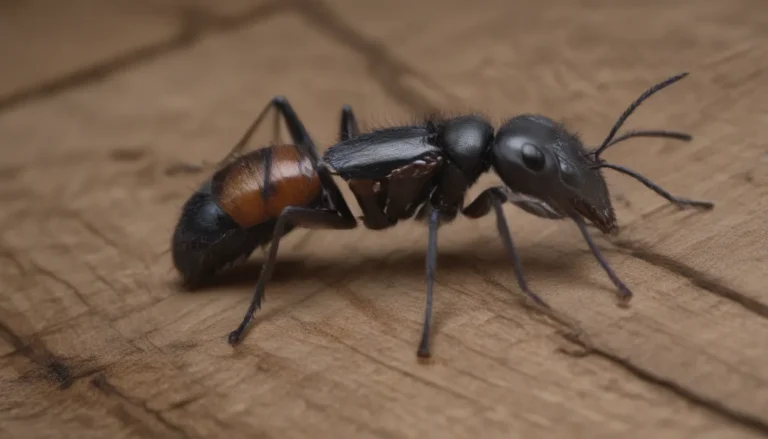Say Goodbye to Spiders: A Comprehensive Guide to Keeping Your Home Arachnid-Free

So, you’ve found a creepy crawly spider scurrying across your floor and now you’re on a mission to keep these eight-legged creatures out of your home. While most spiders are harmless and actually beneficial in controlling other insect populations, it’s completely understandable that you want to keep them at bay, especially if you’re dealing with venomous species like the black widow or brown recluse.
In this in-depth guide, we’ll explore everything you need to know about identifying venomous spiders, understanding spider biology, debunking the myth about pesticides, and providing you with practical tips to get rid of spiders in your home. Let’s embark on this journey together to create a spider-free environment that you can enjoy.
Understanding Venomous Spiders
Before we delve into methods for spider control, let’s first identify the venomous spiders that you should be aware of. While the thought of a spider bite can send shivers down your spine, it’s essential to know that fatalities from spider bites are exceedingly rare. In fact, on average, fewer than six people a year are killed by spider bites in the United States. To put this into perspective, bee, hornet, and wasp stings account for about 60 deaths each year.
The venomous spiders you should watch out for include:
– Brown Recluse Spiders: These spiders are the most toxic and can cause serious tissue necrosis. They have a distinct violin-shaped marking on their bodies and are mostly found in the south-central and midwestern United States.
– Widow Spiders: Various species of widow spiders, including the black widow, are known for their hourglass marking on their abdomen. While their bites can cause pain and sweating, the southern black widow’s bite can lead to more severe symptoms like nausea and abdominal pain.
– Hobo Spiders: Similar to brown recluse spiders, hobo spiders possess venom that can cause necrosis and neurological symptoms. These spiders are typically found in dry environments in the western states.
Demystifying Spider Biology
Spiders, although often mistaken for insects, belong to the arachnid family. They have eight legs and two main body parts, distinguishing them from six-legged insects. Most spiders are carnivores, using their fangs to catch prey. Some spiders spin webs to trap insects, while others are active hunters that chase down their meals. Understanding the behavior and lifecycle of spiders can help you better control their presence in your home.
A female spider can lay up to 3,000 eggs, and the spiderlings that hatch undergo multiple molting stages before reaching maturity. From jumpers to runners, spiders employ various hunting tactics, making it essential to adopt a multi-faceted approach to spider control.
Why Traditional Pesticides Fall Short
Contrary to popular belief, spray pesticides are often ineffective in eradicating spiders. Spiders’ unique physiology, including their long legs that keep them elevated from surfaces, makes it challenging for pesticides to come into contact with the spiders themselves. While residual insecticides in cracks and crevices may offer limited effectiveness, understanding why traditional pesticides fall short is key to implementing more successful spider control strategies.
Tried and Tested Methods for Spider Elimination
Now that you’re armed with knowledge about venomous spiders and the limitations of traditional pesticides, it’s time to explore practical methods for getting rid of spiders in your home. Here are six effective strategies to consider:
- Vacuum All Corners and Cracks: Regularly use the wand attachment on your vacuum cleaner to eliminate spiders and their webs. Pay special attention to corners, cracks, and dark spaces where spiders tend to hide.
- Move Spiders to New Homes: For the kind-hearted homeowner, trapping spiders in a box or jar and relocating them outdoors can be a humane way of dealing with unwanted arachnids.
- Swat the Spiders: Hard blows with a fly swatter or rolled-up magazine can be effective in eliminating spiders, but caution is advised to avoid contact with their fangs.
- Treat Cracks and Crevices: Target areas where spiders enter and exit your home by using residual pesticides designed for spiders. Be mindful of potential pet exposure to these products.
- Use Organic Pesticides: Explore organic, non-toxic solutions such as peppermint oil or pyrethrin to deter spiders from inhabiting your living spaces.
- Implement Sticky Traps: Set up sticky traps in areas where spiders are frequently seen to capture them and identify entry points for further prevention measures.
By incorporating these strategies into your spider control routine, you can create a safer and more comfortable living environment for you and your family.
Understanding Spiders’ Attraction to Homes
Spiders are naturally drawn to spaces where they can find abundant food sources, particularly insects that can be trapped in their webs. Dark, undisturbed areas like basements and garages are prime real estate for spiders seeking shelter. By maintaining cleanliness and reducing insect populations in your home, you can minimize the allure of spiders.
In addition to visible spiders and webs, watch out for small egg sacs, droppings, or unexplained bites, which may indicate a spider infestation. Promptly addressing these signs can prevent a minor spider issue from turning into a major problem.
Proactive Spider Prevention Measures
While it’s essential to know how to eliminate spiders from your home, preventing them from entering in the first place is equally crucial. Here are some proactive measures you can take to discourage spiders from taking up residence:
- Reduce Insect Populations: Spiders thrive on insects, so controlling the bug population in and around your home can deter spiders from sticking around.
- Turn Off Lights at Night: Spiders are attracted to light sources, as they help them capture flying insects. By turning off unnecessary lights at night, you can reduce the likelihood of attracting spiders.
- Weatherproof Your Home: Seal cracks, crevices, and points of entry where spiders may sneak in. Thoroughly weatherproofing your windows, doors, and foundations can significantly decrease the spider population indoors.
Implementing these preventive measures can go a long way in keeping spiders at bay and maintaining a spider-free environment in your home.
When to Seek Professional Help
If you’re dealing with a severe spider infestation or are uncomfortable addressing the issue on your own, it may be time to call in the professionals. Signs that warrant professional intervention include multiple unexplained spider sightings, frequent bites, or the presence of numerous egg sacs in your home. A pest control expert can assess the situation, implement targeted treatments, and provide long-term solutions to manage the spider population effectively.
Remember, while spiders may seem intimidating, they play a crucial role in managing insect populations and are generally not a significant threat to humans. By following these tips and implementing proactive spider control measures, you can enjoy a spider-free home environment that promotes peace of mind and comfort for you and your loved ones.
In conclusion, spiders may be unwelcome guests in your home, but with the right knowledge and strategies, you can effectively keep them at bay. By understanding venomous spiders, exploring spider biology, debunking common misconceptions, and adopting practical spider control methods, you can create a living space that is free of unwanted arachnids. Don’t let spiders spin their webs of fear in your home – take charge and create a spider-free sanctuary for a more pleasant and inviting living environment.





